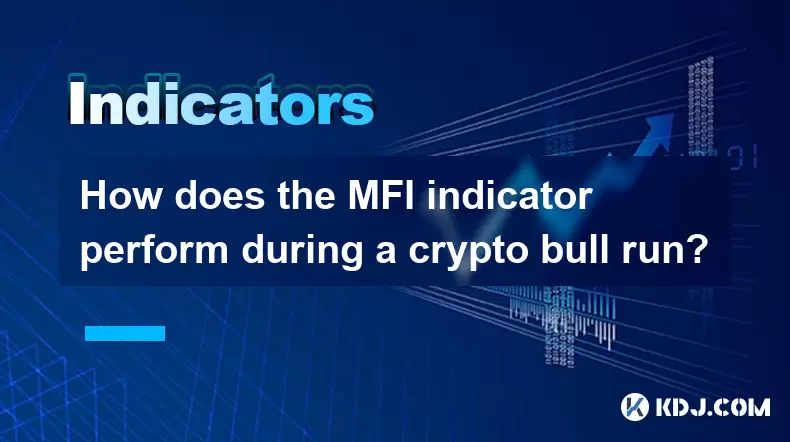-
 Bitcoin
Bitcoin $115100
-1.30% -
 Ethereum
Ethereum $4758
-1.70% -
 XRP
XRP $3.027
-2.19% -
 Tether USDt
Tether USDt $0.9998
-0.01% -
 BNB
BNB $883.2
-1.42% -
 Solana
Solana $204.0
2.62% -
 USDC
USDC $1.000
0.02% -
 Dogecoin
Dogecoin $0.2371
-0.97% -
 TRON
TRON $0.3612
-1.24% -
 Cardano
Cardano $0.9128
-2.19% -
 Chainlink
Chainlink $26.13
-3.93% -
 Hyperliquid
Hyperliquid $44.73
0.90% -
 Sui
Sui $3.715
-0.56% -
 Stellar
Stellar $0.4153
-2.41% -
 Ethena USDe
Ethena USDe $1.000
-0.04% -
 Bitcoin Cash
Bitcoin Cash $588.9
-2.06% -
 Avalanche
Avalanche $25.91
3.27% -
 Hedera
Hedera $0.2525
-1.45% -
 Litecoin
Litecoin $120.9
-1.35% -
 UNUS SED LEO
UNUS SED LEO $9.607
0.30% -
 Toncoin
Toncoin $3.382
-0.31% -
 Shiba Inu
Shiba Inu $0.00001329
-0.38% -
 Uniswap
Uniswap $11.38
-1.67% -
 Polkadot
Polkadot $4.222
2.83% -
 Aave
Aave $354.5
4.93% -
 Dai
Dai $0.0000
0.00% -
 Bitget Token
Bitget Token $4.704
-1.49% -
 Cronos
Cronos $0.1565
1.83% -
 Ethena
Ethena $0.7463
1.55% -
 Monero
Monero $265.8
-0.39%
How does the MFI indicator perform during a crypto bull run?
The MFI helps identify buying pressure in crypto markets; during bull runs, readings above 70 may persist, signaling strength, not reversal—divergences offer key warning signs.
Aug 12, 2025 at 03:57 pm

Understanding the MFI Indicator in Cryptocurrency Trading
The Money Flow Index (MFI) is a momentum oscillator that measures the flow of money into and out of an asset over a specified period, typically 14 days. It combines price and volume data to assess buying and selling pressure. The MFI ranges from 0 to 100, with readings above 70 generally indicating overbought conditions and readings below 30 signaling oversold conditions. In the context of cryptocurrency, where volatility is high and price swings are frequent, the MFI can offer valuable insights into market sentiment during different phases of a market cycle.
During a crypto bull run, prices trend upward with strong momentum, often accompanied by increasing trading volume. This environment can cause the MFI to remain elevated for extended periods. Traders must understand that while the MFI is designed to detect overbought or oversold levels, in a strong uptrend, overbought readings (above 70) do not necessarily signal an immediate reversal. Instead, they may reflect sustained buying pressure and investor enthusiasm.
Behavior of MFI During a Sustained Bull Market
In a robust bull run, such as those observed during the 2017 and 2021 Bitcoin rallies, the MFI frequently remains above 70 for days or even weeks. This prolonged overbought condition is not a contradiction but rather a reflection of strong market demand. When the MFI stays elevated without dropping below 70, it suggests that buying volume continues to dominate, and new capital is consistently entering the market.
It is crucial to recognize that volume confirmation plays a significant role in interpreting MFI signals during bullish phases. If price increases are supported by rising volume and the MFI remains above 60, this reinforces the strength of the trend. Conversely, if the price reaches new highs while the MFI begins to decline—a condition known as a bearish divergence—it may indicate weakening momentum, even in a bull market.
Identifying Divergences for Early Warning Signs
One of the most powerful uses of the MFI during a crypto bull run is spotting divergences between price action and the indicator. A bearish divergence occurs when the price of a cryptocurrency makes a higher high, but the MFI forms a lower high. This suggests that despite rising prices, the underlying buying volume is decreasing, potentially signaling exhaustion.
To detect a divergence:
- Plot the MFI on the same chart as the price.
- Identify recent swing highs in both price and MFI.
- Compare whether the latest price high is greater than the previous, while the MFI high is lower.
- Confirm the divergence with a drop in the MFI below a prior swing low or a break of a rising trendline on the MFI itself.
A bullish divergence, though less common in a bull run, can still occur after a short-term pullback. It happens when the price makes a lower low, but the MFI forms a higher low, indicating that selling pressure is diminishing and buyers are stepping in earlier.
Using MFI to Time Pullbacks and Entries
During a bull run, prices rarely move straight up. Temporary pullbacks or consolidations are common. The MFI can help traders identify strategic entry points during these dips. When the price pulls back but the MFI remains above 50, it suggests that the broader uptrend is still intact and the correction is likely temporary.
To use MFI for pullback entries:
- Wait for the price to retrace into support levels (e.g., moving averages or prior resistance turned support).
- Check that the MFI does not drop below 50 during the pullback.
- Look for the MFI to rebound from the 40–50 zone, indicating renewed buying interest.
- Combine this signal with candlestick patterns (like bullish engulfing or hammer) for added confirmation.
If the MFI dips below 30 during a pullback in a strong bull market, it may indicate an oversold bounce opportunity, especially if followed by a rapid reversal in price and volume.
Combining MFI with Other Indicators for Confirmation
Relying solely on the MFI can lead to false signals, especially in fast-moving crypto markets. To improve accuracy, traders often combine the MFI with other technical tools. Pairing MFI with moving averages, Relative Strength Index (RSI), or volume profile can enhance decision-making.
For example:
- Use a 50-day and 200-day moving average to confirm the overall trend direction. If both are sloping upward and price is above them, the bull run context is confirmed.
- Compare MFI and RSI readings. If both show overbought conditions above 70, the signal is stronger. If RSI is overbought but MFI is not, it may suggest a lack of volume support.
- Apply volume analysis to verify MFI signals. A spike in volume during an MFI rebound from 40–50 adds credibility to a potential continuation.
Additionally, on-chain metrics like exchange netflow or whale accumulation can complement MFI readings by providing fundamental volume context behind the price action.
Common Pitfalls and Misinterpretations
A frequent mistake is treating MFI readings in isolation. For instance, seeing the MFI cross above 80 and immediately assuming a reversal is imminent can lead to premature short positions in a bull market. The MFI can remain overbought during strong trends, and exiting long positions based solely on overbought signals may result in missed gains.
Another pitfall is ignoring timeframe alignment. An MFI reading on a 1-hour chart may suggest overbought conditions, while the daily MFI remains in a healthy uptrend. Always assess MFI across multiple timeframes—daily for trend context, 4-hour for momentum, and 1-hour for entry timing.
Also, low-volume altcoins can produce erratic MFI signals due to thin markets and manipulation. The indicator works best with high-liquidity assets like Bitcoin (BTC) or Ethereum (ETH), where volume data is more reliable.
Frequently Asked Questions
Can the MFI predict the end of a crypto bull run?
The MFI alone cannot predict the exact end of a bull run. However, persistent bearish divergences, repeated failure to reach new highs despite price increases, and a sustained drop in MFI below 60 after prolonged overbought conditions can signal weakening momentum that may precede a reversal.
What is a healthy MFI range during a bull run?
During a strong bull market, a healthy MFI range is typically between 60 and 80. Staying above 60 indicates consistent buying pressure. Brief dips to 50–60 during pullbacks are normal, but a drop below 50 may suggest a deeper correction.
Should I sell when MFI hits 80 in a bull run?
Not necessarily. An MFI above 80 in a bull run often reflects strong momentum rather than an immediate sell signal. Instead of selling, monitor for bearish divergence or a breakdown in volume. Premature selling based on overbought MFI can lead to missed upside.
How does MFI differ from RSI in crypto trading?
While both are oscillators, the MFI incorporates volume, making it more sensitive to changes in buying and selling pressure. RSI uses only price data. In crypto, where volume spikes can precede price moves, MFI often provides earlier warnings of momentum shifts compared to RSI.
Disclaimer:info@kdj.com
The information provided is not trading advice. kdj.com does not assume any responsibility for any investments made based on the information provided in this article. Cryptocurrencies are highly volatile and it is highly recommended that you invest with caution after thorough research!
If you believe that the content used on this website infringes your copyright, please contact us immediately (info@kdj.com) and we will delete it promptly.
- XYZVerse, Shiba Inu, and the 2025 Bull Cycle: A Meme Coin Evolution
- 2025-08-24 13:05:12
- WLFI Token, BingX, and the Trading Landscape: A New York Perspective
- 2025-08-24 12:45:20
- Aave, Governance, Allocation: Navigating DeFi's Shifting Sands
- 2025-08-24 12:45:20
- Crypto Coins in 2025: Meme Coins, Undervalued Blockchains, and Bull Run Predictions
- 2025-08-24 13:05:12
- Fed Pivot Ignites Crypto Rally: Altcoins Set to Outperform?
- 2025-08-24 13:25:12
- Eric Trump, Tokyo, and Metaplanet: A Bitcoin Bonanza?
- 2025-08-24 11:05:13
Related knowledge

What does it mean when the +DI and -DI cross frequently in the DMI indicator but the ADX is flattening?
Aug 11,2025 at 03:15am
Understanding the DMI Indicator ComponentsThe Directional Movement Index (DMI) is a technical analysis tool composed of three lines: the +DI (Positive...

What does the sudden appearance of a "dark cloud cover" candlestick pattern during an uptrend indicate?
Aug 13,2025 at 11:35am
Understanding the 'Dark Cloud Cover' Candlestick PatternThe dark cloud cover is a bearish reversal pattern in technical analysis that typically appear...

What does it mean when the moving average, MACD, and RSI all send buy signals simultaneously?
Aug 11,2025 at 01:42pm
Understanding the Convergence of Technical IndicatorsWhen the moving average, MACD, and RSI all generate buy signals at the same time, traders interpr...

What does it mean when both the KDJ indicator and the RSI show overbought signals simultaneously?
Aug 13,2025 at 11:35am
Understanding the KDJ Indicator in Cryptocurrency TradingThe KDJ indicator is a momentum oscillator derived from the Stochastic Oscillator, widely use...

What does it mean when the price is trading above the SAR indicator but the red dots are densely packed?
Aug 09,2025 at 11:49pm
Understanding the SAR Indicator and Its Visual SignalsThe SAR (Parabolic Stop and Reverse) indicator is a technical analysis tool used primarily to de...

What does it mean when the candlestick chart forms a "Morning Star" but trading volume is sluggish?
Aug 12,2025 at 06:28pm
Understanding the Morning Star Candlestick PatternThe Morning Star is a three-candle bullish reversal pattern commonly observed in cryptocurrency pric...

What does it mean when the +DI and -DI cross frequently in the DMI indicator but the ADX is flattening?
Aug 11,2025 at 03:15am
Understanding the DMI Indicator ComponentsThe Directional Movement Index (DMI) is a technical analysis tool composed of three lines: the +DI (Positive...

What does the sudden appearance of a "dark cloud cover" candlestick pattern during an uptrend indicate?
Aug 13,2025 at 11:35am
Understanding the 'Dark Cloud Cover' Candlestick PatternThe dark cloud cover is a bearish reversal pattern in technical analysis that typically appear...

What does it mean when the moving average, MACD, and RSI all send buy signals simultaneously?
Aug 11,2025 at 01:42pm
Understanding the Convergence of Technical IndicatorsWhen the moving average, MACD, and RSI all generate buy signals at the same time, traders interpr...

What does it mean when both the KDJ indicator and the RSI show overbought signals simultaneously?
Aug 13,2025 at 11:35am
Understanding the KDJ Indicator in Cryptocurrency TradingThe KDJ indicator is a momentum oscillator derived from the Stochastic Oscillator, widely use...

What does it mean when the price is trading above the SAR indicator but the red dots are densely packed?
Aug 09,2025 at 11:49pm
Understanding the SAR Indicator and Its Visual SignalsThe SAR (Parabolic Stop and Reverse) indicator is a technical analysis tool used primarily to de...

What does it mean when the candlestick chart forms a "Morning Star" but trading volume is sluggish?
Aug 12,2025 at 06:28pm
Understanding the Morning Star Candlestick PatternThe Morning Star is a three-candle bullish reversal pattern commonly observed in cryptocurrency pric...
See all articles

























































































